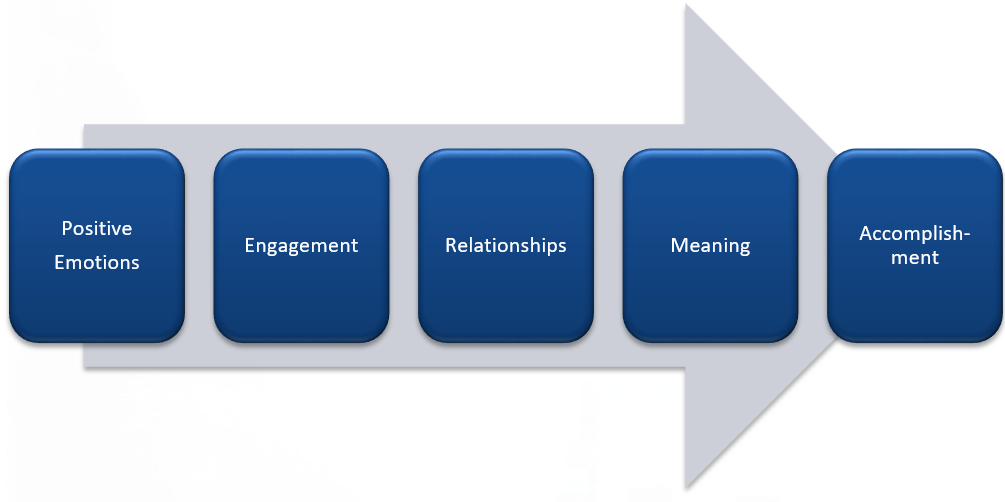Fostering Positive Psychology in the Workplace
To enhance the well-being of employees, it is necessary to set an appropriate salary to cover the economic well-being and enhance welfare programs to cover the physical and mental well-being, but that is not enough. It is important to create an environment where workers can feel rewarded and fulfilled in their work and have a sense of contributing to society. Positive psychology can be utilized in the workplace to boost employee happiness and satisfaction.
We spend half of our waking hours at work on average, and many business executives are starting to see the importance of teaching these psychological strategies in the workplace. Staff may be more cordial and involved in the environment, and their productivity may also increase.
Professor Martin Seligman of the University of Pennsylvania pioneered Positive Psychology, which has established an evidence-based model for the active ingredients of well-being during the last 15 years. His model is abbreviated as PERMA, which stands for Positive Emotions, Engagement, Relationships, Meaning, and Accomplishment.
So, how might the PERMA model be implemented in the workplace to benefit everyone?

Positive Emotions
When people are happy, they thrive. When our mood improves, we set greater goals and work harder to achieve them. We’re less stressed and tired, and we’re more cooperative and problem-solving as a team.
Engagement
The key to increasing employee engagement is to maximize how employees can use and utilize their abilities.
Most of us want to improve ourselves somehow, yet we frequently become trapped in our flaws, focusing on “fixing” portions of ourselves while ignoring the parts of ourselves that are flourishing.
According to Martin Seligman and other academics, we experience higher levels of happiness and lower levels of despair when employment requires our engagement, such as applying our abilities in new and innovative ways.
According to another prominent study, up to 70% of professionals who use their abilities regularly feel more engaged and stimulated by their jobs.
Relationships
Science reveals that investing in our relationships is the most effective method to improve our happiness.
For survival, evolution has wired us to connect with others. These ties can influence how we feel. Our moods, according to happiness study, are practically contagious. Mirror neurons in our brains cause this to happen. When a colleague starts celebrating alongside us, the cells in our brain that fire when we do the same thing light up. Evolutionarily, mirror neurons have aided us in comprehending the feelings and intentions of others.
Meaning
Meaning refers to a meaningful life in this situation. Staffs are more likely to be content with their jobs when there is a shared sense of purpose. Even a routine job becomes more fulfilling when people realize how their efforts have a genuine influence on the lives of others.
Achievement
Realistic goals backed up by specific activities are frequently the source of success. It is vital to have work accomplishments to motivate oneself to grow and thrive.
Leaders can help their employees achieve their goals by incorporating their abilities into future discussions about their objectives. Asking strengths-based questions, for example, can make employees feel respected and valued.
Positive Leadership
In the age of Great Resignation, leaders are required to foster and enhance a sense of satisfaction and contribution from the employees and maximize the abilities to work together in the new environment.
Dr. Kim Cameron of the University of Michigan has conducted studies focused on "positive energy" that is commonly seen in organizations with high satisfaction among workers and with a good result. The research proved that utilizing “positiveness” in an organization will lead to a great organizational performance that cannot be attained by conventional methods.
BCon (Business Consultants, Inc.), with the corporation with Dr. Kim Cameron and business practitioners, developed a “Positive Leadership Program” that enables leaders not only to understand "Positive Leadership" as knowledge but also at implementing the leadership on a practical level. Leaders doesn’t overlook the negatives; they overcome negative by giving more focus on the positives.
To utilize positiveness from the individual level to the organizational level, the key is to nurture "Energizers," who increase the energy and motivation of people around.
“If your actions inspire others to dream more, learn more, do more and become more, you are a leader.”
- John Quincy Adams
You can take Positive Leadership regardless of the position by increasing the awareness of your strengths and others, understanding the way to best utilize those strengths, and knowing how to build positive relationships with others. Fostering well-being across an organization is a job that takes lots of hard work. Yet, the payoff is tremendous. It ranges from talent attraction to retention to building a solid employee brand. The benefits are multi-faceted. Employees invest their time and energy, productivity increases, and stress decreases. Hence, the effort is worth it.
1Positive Psychology, 7 Dec 2021, Brad Desmond, Positive Psychology in the Workplace: Thank God its Monday, Accessed 10 Dec 2021, https://positivepsychology.com/positive-psychology-workplace-labor-of-love/
For more about this topic, download our latest book "The Multi-Facets of Well-Being" for FREE:
